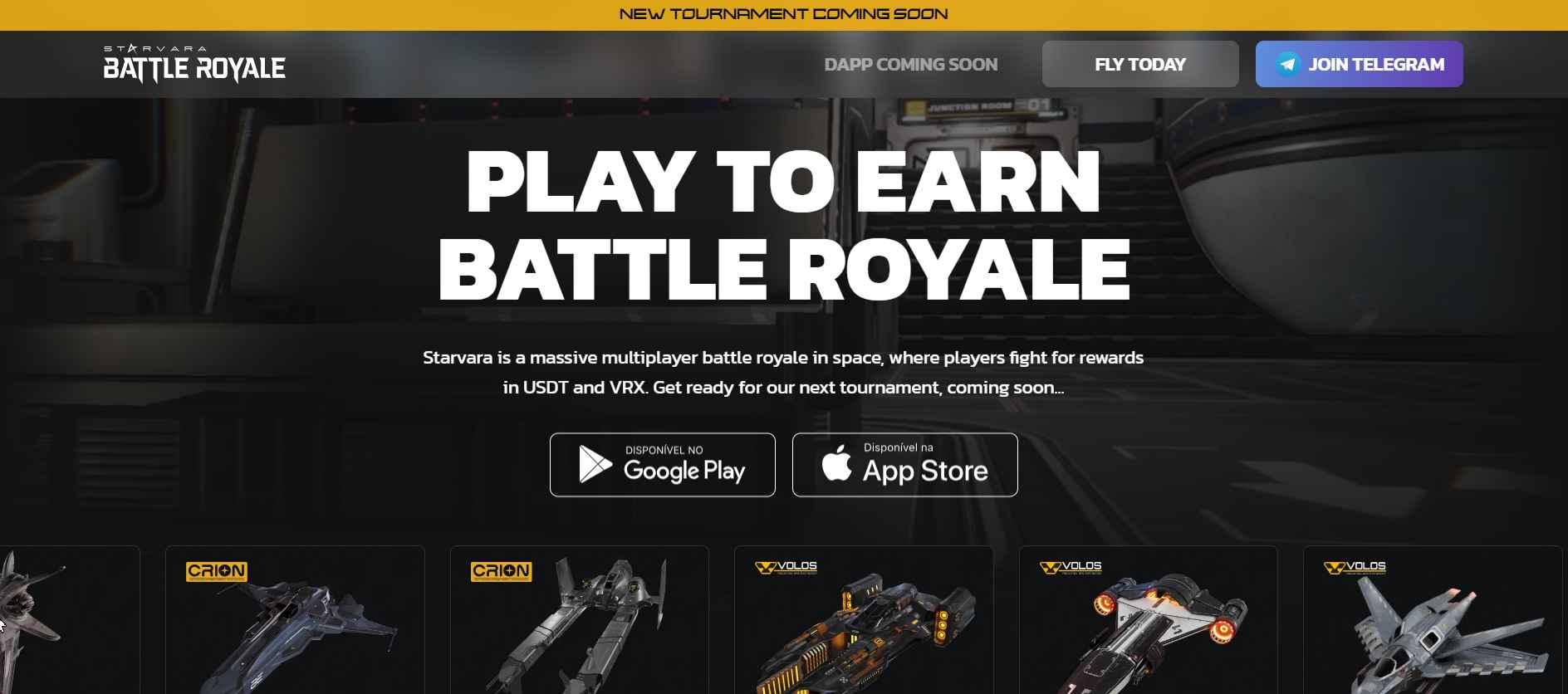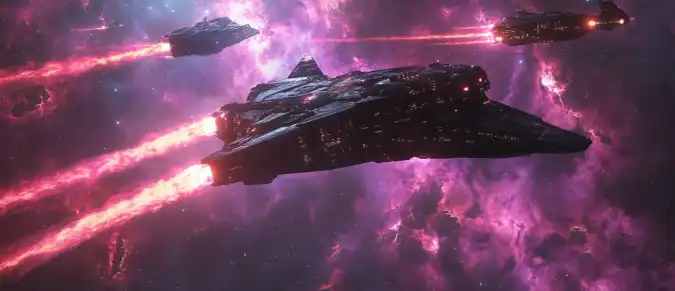Starvara Battle Royale is a next-generation mobile game that combines the genre of a space shooter with a Web3-based economy. Players control ships, engage in large-scale battles, and earn the in-game currency VRX, which can later be used for staking and receiving rewards in USDT. The project aims to blur the line between gameplay and financial ecosystems, creating a sustainable digital economy where every in-game action carries real value. The developers emphasize that Starvara is designed to merge traditional gaming with blockchain technology, maintaining a balance between competition and rewards. The project has already gained attention within the Web3 gaming community thanks to its visuals, promise of low latency, and clear long-term vision.
- Concept and Goals of Starvara Battle Royale
- Game Modes and Gameplay Structure
- Economic Model and VRX/VARA Tokens
- Technology and Visual Implementation
- Roadmap, Tournaments, and Future Prospects

Concept and Goals of Starvara Battle Royale
Starvara Battle Royale is the flagship title of the Starvara universe, designed as a mobile esports project with a global in-game economy. The main goal is to merge the familiar Battle Royale format with real economic value. Players earn VRX by showcasing their piloting skills and strategy, with all progress synchronized to the on-chain infrastructure.
The team highlights that the game is targeted at the mass market — users don’t need blockchain expertise to start playing. Entry is simple — a quick registration and a game account — but later, progress can be transferred into digital ownership through the DApp. This approach lowers the entry barrier and makes Web3 gaming accessible to a broader audience. Moreover, the developers envision Starvara as a bridge between Web2 and Web3 gaming, allowing players to enjoy traditional gameplay without worrying about wallets or tokens. Eventually, this will help unite millions of users within a decentralized ecosystem.
Game Modes and Gameplay Structure
Starvara offers several types of activities tailored to different player styles and motivations:
- Battle Royale — large-scale cosmic battles involving over 100 pilots.
- 1 vs 1 — intense duels where precision and reflexes are key.
- PvE Boss Battles — cooperative fights against massive bosses.
- VRX Tournaments — competitive modes with entry fees and prizes for top players.
This variety helps the game retain both casual and competitive audiences. PvP modes create a thrilling competitive dynamic, while PvE content appeals to casual players. The tournament system adds real stakes with VRX rewards. Complemented by ship customization, seasonal updates, and leaderboards, Starvara delivers a complete and evolving gameplay loop. Its visual richness and smooth controls make the experience immersive even on mobile devices, blending arcade intensity with esports-driven motivation.
Economic Model and VRX/VARA Tokens
The Starvara economy revolves around the in-game token VRX and an external DApp interface. Players earn VRX through victories, missions, and achievements, and will later be able to stake it via smart contracts to receive a share of ecosystem revenues in USDT. The previously announced VARA token remains part of the original litepaper, but the current focus is centered on VRX.
| Element | Description |
|---|---|
| VRX | In-game currency earned through gameplay activity |
| Staking via DApp | Players can stake VRX to receive a portion of the USDT pool |
| Revenue Sharing | 30% of game revenues distributed among VRX stakers |
| VARA | Legacy token from litepaper (1B supply), possible relaunch |
| DApp Launch | Planned for late 2025, based on ERC-20 with public audit |
This table summarizes the core elements of the Starvara economy, where every in-game action carries measurable value both inside and outside the game. The transition from VARA to VRX reflects a move from an ICO-style model to a modern GameFi structure, positioning VRX as the ecosystem’s primary asset. Developers also promise a transparent rewards system enabling players to track their contribution and earnings. This economic model is designed to sustain long-term player engagement and ecosystem growth.
Technology and Visual Implementation
According to official sources, Starvara utilizes Byte Streaming technology, which minimizes latency and ensures fluid gameplay during large-scale sessions. This is vital for real-time multiplayer on mobile platforms. The game’s visuals rely on “high-fidelity graphics,” providing console-quality detail on smartphones. Detailed starships, explosive combat effects, and deep color gradients reinforce the sci-fi setting.
The technical infrastructure includes scalable servers and cloud-based data handling, with future integration of gameplay statistics through on-chain APIs. While specifics about smart contracts and audits remain undisclosed, developers affirm their commitment to transparency and security. Starvara’s visual design draws inspiration from cyberpunk and futuristic aesthetics, emphasizing light dynamics, reflections, and texture contrast. This combination sets the foundation for expanding Starvara into a full-scale metaverse uniting art, gaming, and decentralized finance.
Roadmap, Tournaments, and Future Prospects
Starvara’s development is divided into multiple stages: building the game’s foundation and community, implementing Web3 mechanics, and launching the DApp. The roadmap targets late 2025 for converting VRX into an ERC-20 token and initiating USDT payouts. The team also plans esports tournaments and large-scale events for gaming guilds and competitive players.
The project’s long-term success depends on maintaining a sustainable economy and expanding its mobile audience. Key milestones include finalizing tokenomics, ensuring regulatory compliance for payouts, auditing the DApp, and scaling infrastructure. In the coming years, Starvara aims to evolve into an MMO experience, introducing galactic exploration, trading systems, and resource gathering. The project’s potential lies in merging gaming, decentralization, and digital economics into a single self-sustaining Web3 ecosystem.




